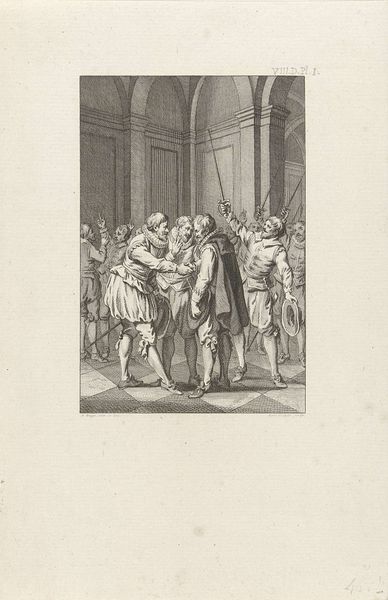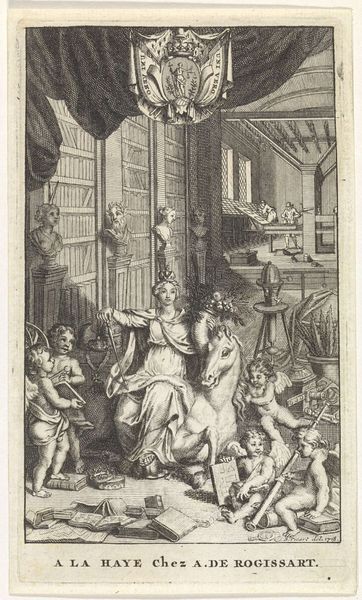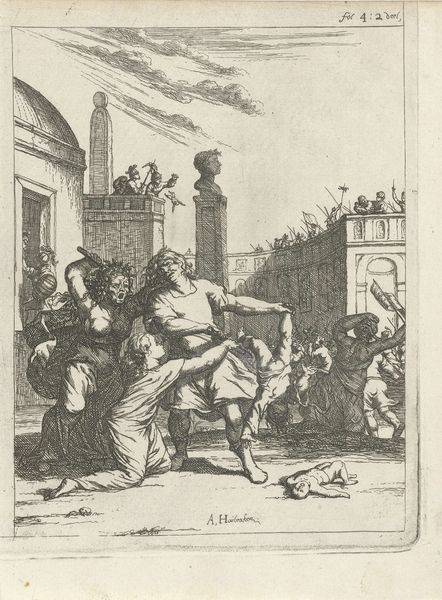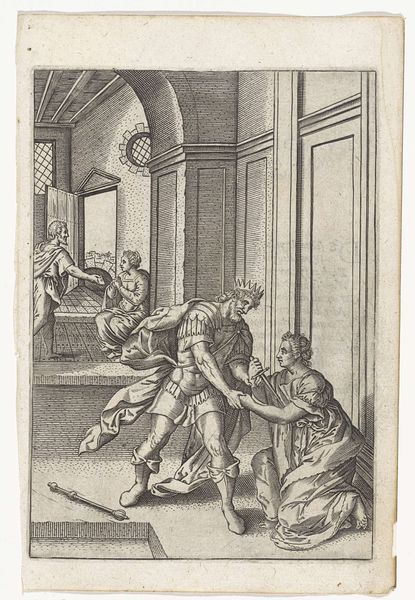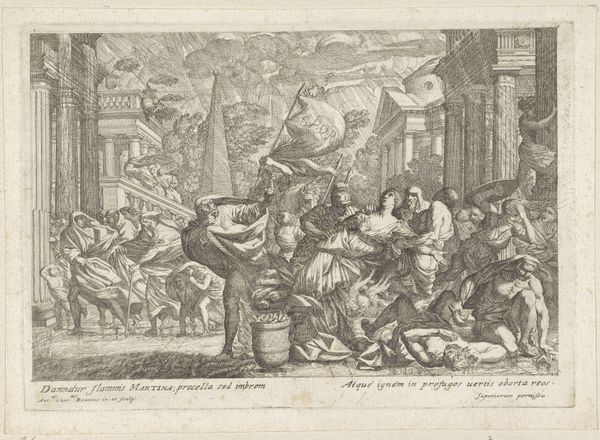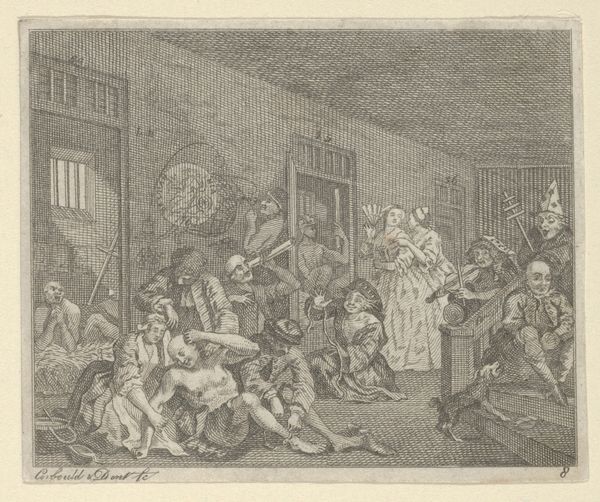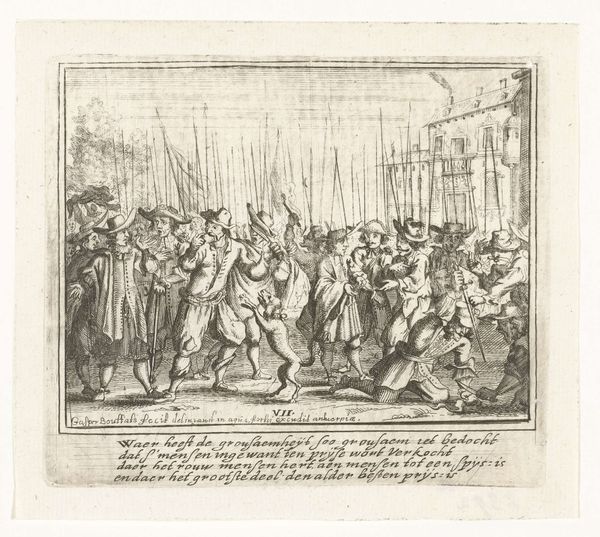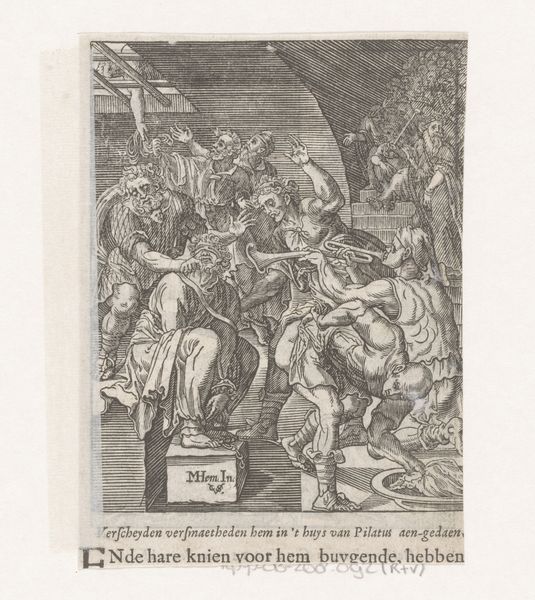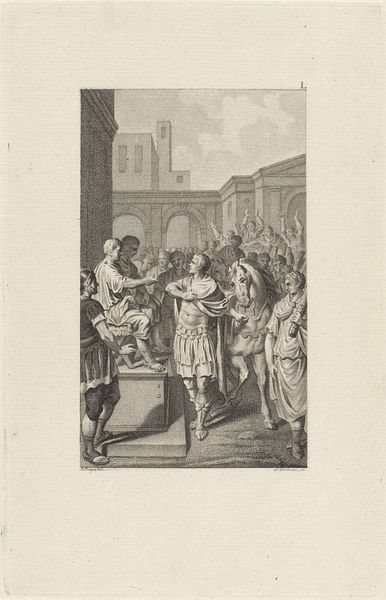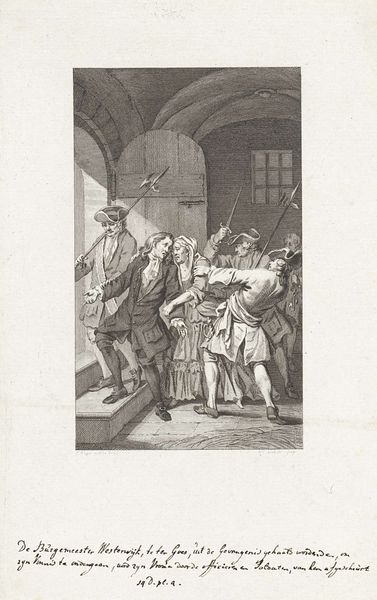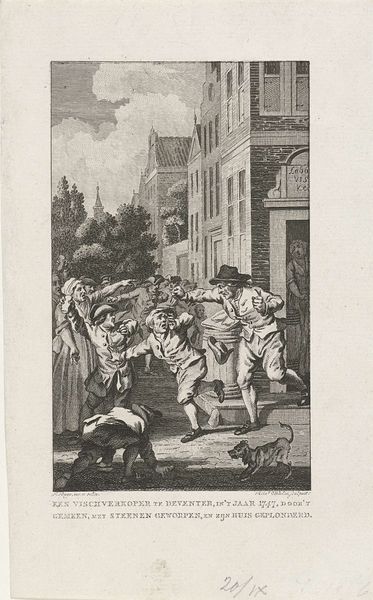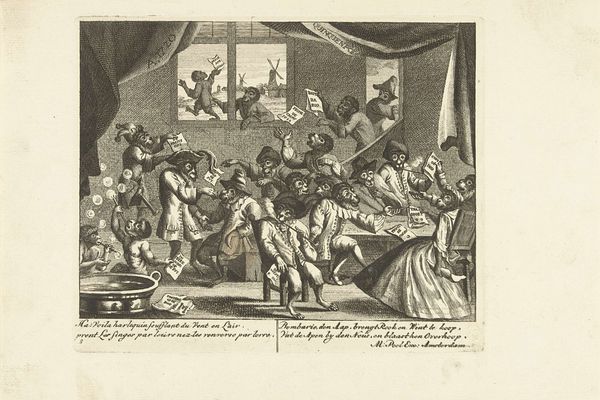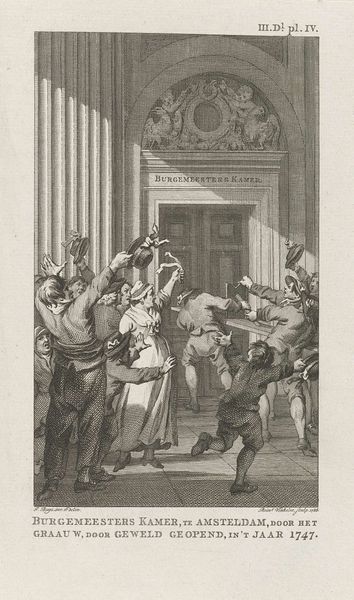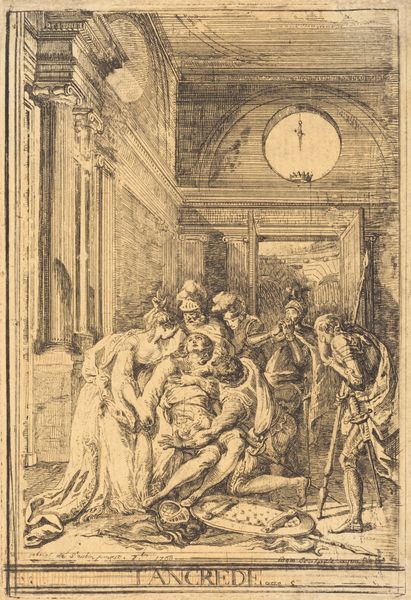
print, engraving
#
narrative-art
#
baroque
# print
#
old engraving style
#
figuration
#
genre-painting
#
engraving
Dimensions: width 146 mm, height 192 mm
Copyright: Rijks Museum: Open Domain
Curator: This is Frans Greenwood's "Gevecht in een herberg," or "Fight in a Tavern," an engraving dating back to 1733. It captures a chaotic scene with remarkable detail. Editor: My first thought is that the energy radiating from this engraving is palpable; the density of figures creates an incredible sense of tension and compressed space. Curator: Indeed, Greenwood uses the Baroque style to depict what appears to be a quintessential tavern brawl. Given the social climate of the 18th century, such scenes served not only as entertainment but also as commentary on societal tensions. Notice how figures from different social strata mingle violently; consider what that says about the power dynamics of the era. Editor: And look at the incredible use of line! The cross-hatching, especially in the darker areas, creates depth and volume. The composition guides your eye from the foreground figures locked in combat to the frenzy escalating in the background. Note how effectively the light seems to stream in from the windows, highlighting the primary actors in this drama. Curator: I agree. Furthermore, it's fascinating how the work operates as a kind of genre painting—these lively, everyday scenes were often moral lessons in disguise. It raises questions about class conflict, acceptable behavior, and public versus private spheres during that time. Can we see these bodies pushing up against each other, weapons brandished, as representative of something bigger? Editor: Yes, absolutely. The formal elements of the print reinforce that interpretation. The composition isn't simply chaotic; there's a structured layering that builds toward the peak of action, a kind of visual crescendo. Even the dog adds to this visual dynamic; its submissive pose adding a surprising sense of calm. Curator: And there's the role of the tavern itself. The architecture acts almost as another character, providing a context and container for the events depicted. Consider the accessibility of these public houses and their potential to instigate societal conflict, or to simply mirror social issues already at play. Editor: It makes you consider the interplay between realism and artistic license. Is this an accurate depiction of such events, or an amplified and theatrical construction? The balance that Greenwood strikes keeps the print lively. Curator: Looking at it now, I find that Greenwood offers us more than just a historical record, but also a window into enduring social narratives and dynamics that remain incredibly relevant to this very day. Editor: Ultimately, for me, it's a masterclass in the possibilities of line, tonal contrast, and composition to portray motion, noise, and energy in what is, essentially, a static medium.
Comments
No comments
Be the first to comment and join the conversation on the ultimate creative platform.
